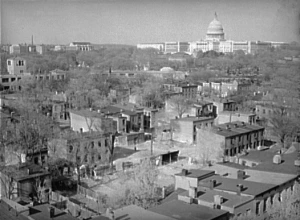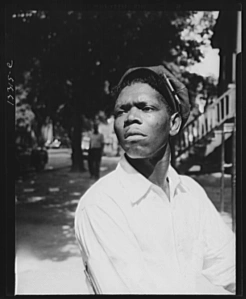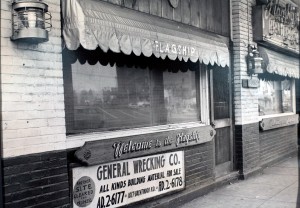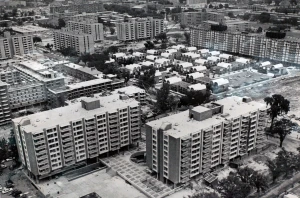
Prior to 1950s, Southwest Washington, D.C. was home to a thriving African American community. Many of the District’s African American-owned businesses and residences were located in this area. By 1952, however, white business leaders and members of the federal government began to push for the large-scale clearance of these neighborhoods to make room for new development downtown.[1]
The federal government established the Redevelopment Land Agency and the National Capital Planning Commission to design, monitor, and complete the redevelopment of Southwest D.C. under the District of Columbia Redevelopment Act of 1950. The rationale provided for the urban renewal project included concerns about congestion in the downtown area and preoccupation over unhealthy slum conditions and unsightly dilapidated buildings. The major expansion of the federal government during the New Deal and World War II created pressure to free up residential space for federal employees who worked downtown. Additionally, Title I of the National Housing Act of 1949 stipulated that major urban cities would receive funds in order to renovate blighted areas, including neighborhoods classified as slums or buildings deemed unsafe and uninhabitable. These acts gained judicial support when in 1954, the US Supreme Court ruled that a property could be condemned and taken by the federal government solely to beautify a community for the benefit the general public.[2]

The implementation of the urban renewal project displaced the large number of African Americans living in Southwest D.C. The project leveled 99 percent of buildings in the Southwestern quadrant of the city and forced the 4,500 African American Families who had previously resided in Southwest D.C. to relocate to other areas –mainly to Northeast and Southeast D.C.[3] Of the 5,900 new buildings constructed in the area, only 310 were classified as moderately-priced housing units.[4] The project tore apart the culture and history of historic African American neighborhoods. Following resettlement in other areas of the city, 25% of displaced residents reported not making a single friend in their new neighborhood.[5] While local critics deemed the urban renewal program to be the “Negro Removal Program,” the project had a wide impact on the nation as it became a model for other large cities to emulate.[6]

The urban renewal project targeting Southwest D.C. in the 1950s and 1960s was in some ways a continuation of the alley removal process of the 1920s and 1930s. It is also echoed by recent trends in development and gentrification downtown. Like the African American neighborhoods and slums of the 1950s and 1960s, alley communities were a focus of social reform –they were viewed as unhealthy, immoral, and threatening primarily because their inhabitants were not white.[7] The same language used to motivate a purification of the alleys was used to inspire mass displacement of African Americans from downtown for the urban renewal project.

It is important to view the dispersal and displacement of the city’s homeless residents through the lens of historical prejudice against African Americans — 82 percent of Washington, DC’s homeless population is of African American descent.[8] When the long history of D.C.’s alley communities and the displacement of African American neighborhoods from Southwest is taken into consideration, it becomes clear that the District’s African American residents have a strong historical claim to downtown space.
[1] Jaffe, Harry and Tom Sherwood. Dream City: Race, Power, and the Decline of Washington, D.C. New York: Simon and Schuster, 1994. Page 29.
[2] Berman v. Parker, 348 U.S. 26, 75 S. Ct. 98, 99 L. Ed. 27
[3] Jaffe, Harry and Tom Sherwood. Dream City: Race, Power, and the Decline of Washington, D.C. New York: Simon and Schuster, 1994. Page 82.
[4] Gillette, Howard. Between Justice and Beauty: Race, Planning, and the Failure of Urban Policy in Washington, D.C. Baltimore: Johns Hopkins University Press, 1995. Page 163.
[5] Ibid. Page 165.
[6] Farrar, Margaret. Building the Body Politic: Power and Urban Space in Washington, D.C. Chicago: University of Illinois Press, 2008.
[7] Ibid. Page 63.
[8] Washington Legal Clinic for the Homeless. Facts on Homeless in Washington, D.C. Overview. www. legalclinic.org/homelessness/factsheet.pdf.
2 thoughts on “Urban Renewal: The Story of Southwest D.C.”